As industries seek materials that deliver flexibility, durability, sustainability, and cost efficiency, TPEs continue to rise in popularity. At Dongguan Yiyuan Polymer Materials Co., Ltd., we specialize in providing advanced thermoplastic elastomer products engineered to meet diverse and demanding application needs.
This article presents an in-depth look at thermoplastic elastomer uses, their main advantages, and key thermoplastic elastomer applications across major industries.
Before delving deeper into the properties of thermoplastic elastomers, we know that thermoplastic elastomers (TPEs) are a class of polymers that combine the processing advantages of thermoplastics with the elasticity of rubber. They can be melted, molded, and recycled like plastics, while also possessing the feel, resilience, and softness of rubber.
So what are the key characteristics of TPE materials?
- Excellent elasticity and flexibility
- Easy processing via injection molding or extrusion
- Recyclable and environmentally friendly
- Wide hardness range (from very soft to rigid)
- Chemical and weather resistance
- Lightweight and cost-effective
These features enable manufacturers to design products that are both functional and comfortable making TPEs a preferred choice for modern engineering.
Thermoplastic Elastomer Uses in Different Industries
As demand for high-performance materials continues to grow, TPEs have expanded into nearly every industrial sector. Below are some of the most important thermoplastic elastomer uses today.
1.Common applications include:
- Soft grips for toothbrushes, tools, and kitchenware
- Non-slip surfaces for electronics and appliances
- Baby products such as pacifiers and bottle handles
- Protective cases and ergonomic handles
TPEs improve user experience by delivering soft-touch surfaces, cushioning, and anti-slip performance.
2. Automotive Components
TPEs are widely used in the automotive industry due to their durability and ability to withstand harsh environments.
Typical automotive TPE uses include:
- Seals and gaskets
- Interior trims and soft-touch components
- Cable insulation and tubing
- Airbag covers and dashboard parts
Their lightweight nature also contributes to fuel efficiency and vehicle sustainability.
3. Medical and Healthcare Applications
Medical-grade TPEs offer excellent biocompatibility, making them ideal for healthcare environments.
Examples include:
- Medical tubing
- Grips for handheld medical devices
- Seals, plugs, and valves
- Wearable medical equipment
In many cases, TPEs replace PVC or latex to meet modern safety and hypoallergenic requirements.
4. Electronics and Electrical Protection
The electrical and electronics industry benefits from the insulating properties of TPEs.
Applications include:
Cable jackets and connectors
Soft housings for handheld devices
Shock-absorbing protective components
TPEs help improve device durability and ensure user safety.
5. Industrial and Mechanical Uses
In industrial environments, TPEs are valued for their excellent mechanical strength and resistance.
Thermoplastic elastomer uses include:
Seals and O-rings
Vibration-damping components
Wheels, rollers, and grips
Industrial hoses and tubing
Their resistance to fatigue and impact makes them ideal for heavy-duty operations.
Advantages of Using TPE Materials in Manufacturing
Choosing TPEs offers numerous benefits:
✔ Cost-Effective
TPEs require shorter production cycles and reduce material waste, improving manufacturing efficiency.
✔ Environmentally Friendly
They are recyclable and align with global sustainability goals.
✔ Highly Customizable
Hardness, color, elasticity, and performance characteristics can be customized for specific applications.
✔ Excellent Processing Flexibility
Suitable for injection molding, extrusion, blow molding, and more.
As a leading manufacturer supplier of thermoplastic elastomer material, Dongguan Yiyuan Polymer Materials Co., Ltd. is dedicated to delivering high-quality thermoplastic elastomer products material to meet the evolving needs of global markets. For companies seeking reliable and versatile material solutions, TPEs offer unmatched potential across countless thermoplastic elastomer applications.
When it comes to footwear design, choosing the right sole material is one of the most important decisions for both manufacturers and consumers. TPR TPE Sole Material has gained attention in recent years as brands and factories look for materials that balance durability, comfort, and cost-efficiency. But how do TPR and TPE really compare, and which is better for shoes?
Understanding TPR Sole Material
TPR Sole Material (Thermoplastic Rubber) is widely used in shoe production thanks to its excellent flexibility, slip resistance, and cost-effectiveness. It performs well in casual footwear, children’s shoes, and even certain sports shoes. TPR soles are lightweight and easy to mold, making them a practical choice for large-scale shoe manufacturing. However, they may wear down faster in extreme environments compared to more advanced materials.
Exploring TPE Sole Material
On the other hand, TPE Sole Material (Thermoplastic Elastomer) combines the resilience of rubber with the flexibility of plastic. TPE soles offer superior elasticity, weather resistance, and comfort underfoot, making them ideal for high-performance or premium footwear. Additionally, TPE is often recyclable, which adds to its appeal in today’s eco-conscious market.
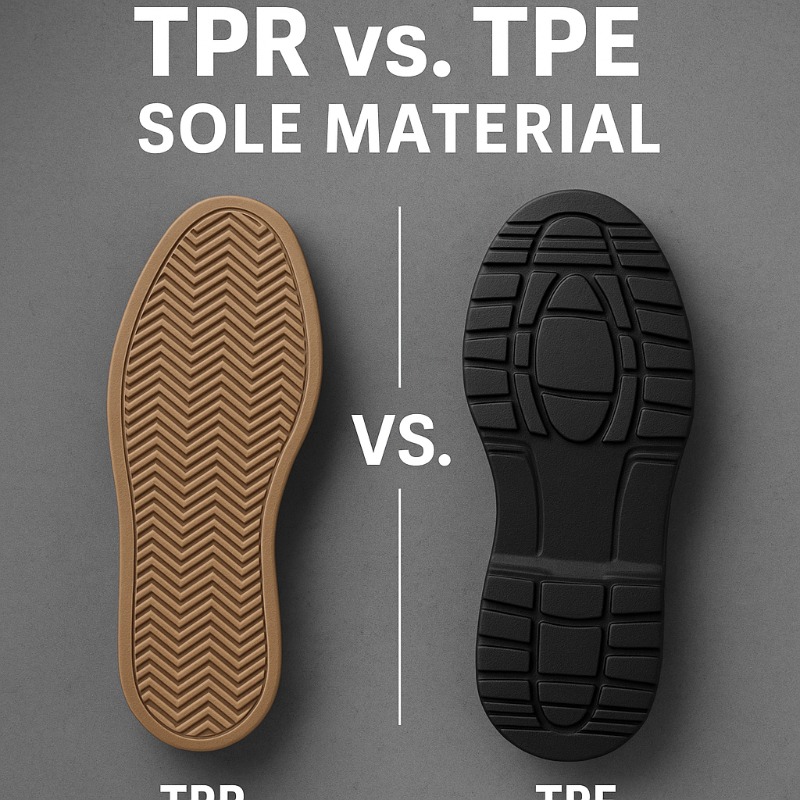
Which Is the Better Choice?
The decision between TPR and TPE ultimately depends on your priorities. For affordable, everyday footwear, TPR provides a balance of function and value. For shoes that require greater durability, comfort, or sustainability, TPE is often the better option. Many manufacturers now combine both to optimize performance and reduce production costs.
Why Choose Dongguan Yiyuan TPR TPE Sole Material
For businesses seeking a reliable partner, Dongguan Yiyuan TPR TPE Sole Material offers the perfect solution. With years of expertise in developing both TPR Sole Material and TPE Sole Material, Dongguan Yiyuan delivers high-quality products tailored to your needs. Beyond materials, their commitment to innovation, strict quality control, and excellent customer service ensures long-term value for global footwear brands.
In 2025, choosing Dongguan Yiyuan means choosing both performance and partnership for your shoe business.
Today, era of sustainable innovation, thermoplastic elastomers (TPE) material have become one of the most versatile and eco-friendly materials used across industries. As global manufacturers seek lighter, recyclable, and high-performance alternatives to traditional rubber and PVC, TPE materials stand out as a smarter, greener choice.
What Is TPE Material?
TPE Thermoplastic Elastomer is a unique class of polymer that combines the elasticity of rubber with the easy processing of thermoplastics. Unlike conventional rubber that requires vulcanization, TPE can be molded, remolded, and recycled multiple times while maintaining its original softness and flexibility.
The molecular structure of TPE consists of both hard and soft segments, the hard segments provide strength and stability, while the soft segments ensure elasticity and comfort. This dual structure gives TPE materials exceptional mechanical resilience, flexibility, and environmental adaptability.
Because TPE is 100% recyclable and free from harmful substances such as phthalates, it has become a key eco-friendly elastomer for modern manufacturing.
The Key Differences of TPE vs. Rubber and PVC
When comparing TPE materials with rubber and PVC, several clear advantages emerge:
Recyclability: Unlike rubber, which cannot be remelted after curing, TPE can be recycled and reused without performance loss — making it an ideal sustainable alternative.
Processing Efficiency: TPE can be processed using standard injection molding or extrusion machines, which reduces production time and energy costs.
Safety and Environmental Benefits: TPE is odorless, free of halogens, and compliant with RoHS and REACH standards, whereas PVC may contain chlorine-based compounds.
Design Flexibility: Its broad hardness range (from Shore A 20 to D 50) allows for applications in soft-touch grips, seals, and shoe soles.
In short, TPE is a recyclable and energy-efficient alternative to traditional rubber and PVC, offering improved performance and lower environmental impact.
Main Applications of TPE Materials
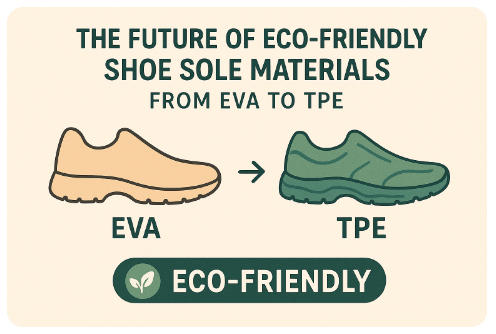
Due to its balance of performance, durability, and environmental benefits, TPE has gained wide acceptance across multiple industries:
First and important application is footwear manufacturing:
TPE is increasingly used as an eco-friendly shoe sole material, replacing EVA and PVC for better flexibility, cushioning, and slip resistance.
Automotive Components:
Used for gaskets, seals, and interior trims due to its weather resistance and noise-reduction capabilities.
Consumer Products:
Ideal for soft-touch grips, handles, toothbrushes, and personal-care products where comfort and non-toxicity are important.
Electronics and Cables:
Provides insulation and flexible protection while meeting stringent safety standards.
Medical and Packaging Uses:
With medical-grade formulations, TPE ensures hygiene, biocompatibility, and safety in healthcare and food packaging applications.
These diverse applications demonstrate TPE’s adaptability and reliability as an eco-friendly elastomer suitable for both industrial and consumer needs.
Why TPE Is Considered an Eco-Friendly Material
Sustainability is no longer optional, it is the foundation of modern product design. TPE materials contribute significantly to environmental protection in several ways:
Recyclability:
TPE scraps and end-of-life products can be reprocessed into new materials, minimizing waste.
Energy Efficiency:
Its low processing temperature and absence of vulcanization save energy during production.
Non-Toxic and Safe:
TPE compounds are free from heavy metals, phthalates, and latex — making them safer for both manufacturers and end users.
Long Lifespan:
TPE’s excellent weather, chemical, and UV resistance extend the service life of finished products, reducing replacement frequency.
These advantages make TPE one of the most sustainable and environmentally responsible materials available for industrial and consumer manufacturing.
Dongguan Yiyuan Polymer Materials Co., Ltd.: Your Trusted TPE Thermoplastic Elastomer Raw Material Manufacturer
As a professional TPE manufacturer in China, Dongguan Yiyuan Polymer Materials Co., Ltd. specializes in developing and producing high-quality, eco-friendly elastomer compounds for global clients. With years of expertise in polymer technology, we provide customized TPE materials tailored to specific applications, from footwear soles to automotive seals.
Our Core Strengths
Custom Formulations: We develop personalized compounds based on hardness, color, and performance requirements.
Strict Quality Control: Every batch undergoes comprehensive physical and chemical testing to ensure consistency.
Sustainability Commitment: Our materials comply with RoHS, REACH, and SGS standards, supporting environmentally responsible manufacturing.
R&D Expertise: Our technical team continuously innovates to enhance product strength, flexibility, and recyclability.
By integrating innovation and sustainability, Dongguan Yiyuan Polymer Materials Co., Ltd. helps global partners reduce environmental footprints while maintaining product excellence.
Choosing the Right TPE Grade for Your Application
Different projects demand different material characteristics. Dongguan Yiyuan Polymer Materials Co., Ltd. offers a range of TPE grades designed for specific use cases:
Soft-Touch TPE:
Ideal for handles, grips, and over-molding applications.
High-Elasticty TPE:
Used for shoe soles, sports equipment, and seals requiring superior rebound.
Weather-Resistant TPE:
Suitable for outdoor automotive or construction parts.
Transparent TPE:
Commonly used in medical and cosmetic packaging.
Selecting the right compound ensures optimal performance and durability — our engineers can recommend the most suitable thermoplastic elastomer solution for your project.
Building a Sustainable Future with TPE Materials
The global shift toward sustainability demands smarter material choices — and TPE materials are leading this transformation. With their unique combination of flexibility, recyclability, and safety, they are replacing traditional plastics and rubber in countless applications.
At Dongguan Yiyuan Polymer Materials Co., Ltd., we believe that every manufacturer can contribute to a greener planet through responsible material selection. Our mission is to deliver high-performance, eco-friendly elastomers that meet the evolving needs of modern industries.
Explore customized thermoplastic elastomer solutions designed for your sustainable products and global manufacturing goals. Contact today!
Long Carbon Fiber Reinforced PPS
High-performance thermoplastic composites can replace metals. Although PEEK is regarded as the benchmark for engineering performance, reinforced PPS offers a truly cost-effective alternative.
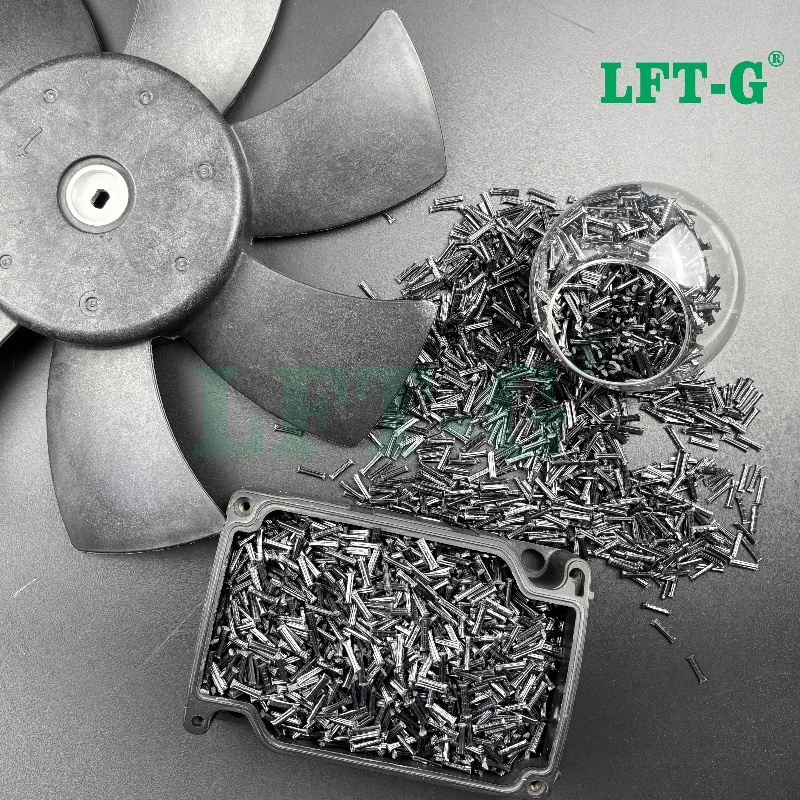
The demand for engineering thermoplastics such as PC and high-performance thermoplastics like PEEK is steadily increasing in industrial applications. These materials, when produced in the form of 3D printing filaments, offer lightweight alternatives to metals for industries such as aerospace and energy.
By incorporating reinforcements, the properties of these high-performance plastics can be further enhanced. For example, the addition of chopped carbon fibers improves both strength and stiffness. Such reinforcements can be applied not only to low- and mid-range engineering plastics but also to high-performance thermoplastics. As long as the 3D printer nozzle can handle abrasive materials, these composites can be printed as easily as standard thermoplastics.
However, a major drawback of high-performance composites such as reinforced PEEK is the high cost of the required 3D printing hardware. These materials demand extremely high extrusion and chamber temperatures, and the equipment capable of meeting these requirements often costs six figures—undermining one of the key advantages of plastic 3D printing: cost efficiency.
This article explores carbon fiber reinforced PPS as an alternative that delivers performance comparable to metals and PEEK, while offering significant advantages in temperature requirements and overall cost.
Introduction to PPS
What is PPS?
Polyphenylene sulfide (PPS) is a semi-crystalline thermoplastic commonly classified as a high-performance polymer, alongside materials such as PEEK and PEI. It is widely used in machining, mold manufacturing, and additive manufacturing due to its excellent mechanical strength, superior heat resistance compared to standard and engineering thermoplastics, and inherent flame retardancy.
One of the most remarkable properties of PPS is its outstanding chemical resistance. It can withstand a wide range of acids, bases, and solvents, and even shows partial resistance to strong oxidizing agents under certain conditions. However, for particularly aggressive oxidizers such as chlorine dioxide, additional coatings or linings may be required for protection.
With its exceptional performance and more affordable cost compared to PEEK, PPS has found broad applications across various industries. Its mechanical and chemical durability make it ideal for automotive, energy, and chemical processing sectors, while its flame-retardant and self-extinguishing characteristics make it a preferred material for electrical and electronic components, such as surface-mount devices (SMT), motor housings, and transistor encapsulations.
Beyond being an outstanding thermoplastic, PPS is also a reliable replacement for metals such as steel and aluminum. Its thermal stability and chemical resistance enable it to perform effectively in harsh chemical environments, offering strong protection against corrosion and automotive fluids.
PPS as a Composite Material Solution
Reinforced PPS
To improve its strength and rigidity, PPS is often reinforced with chopped carbon fibers or glass fibers, resulting in composite materials with enhanced performance. In fact, PPS is more commonly available in a filled form rather than unfilled.
Researchers have noted that “the addition of carbon fibers significantly enhances the mechanical properties, tribological behavior, post-fire structural integrity, as well as the electrical and thermal conductivity of PPS blends and composites.”
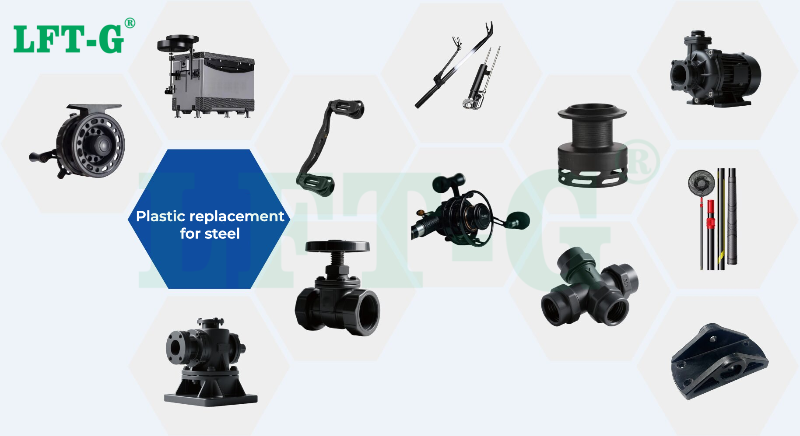
Applications of PPS Composites
- 1. Automotive Industry: High-voltage connectors, battery brackets, motor end covers, and electronic control housings for electric vehicles. Under-the-hood components such as oil pump housings, turbocharger parts, throttle bodies, and cooling system components. Structural components replacing metals, such as seat frames, lamp brackets, and suspension parts.
- 2. Industrial Equipment & Machinery: Precision gears, bearing housings, pump casings, valves, and insulation supports. Industrial jigs, fixtures, tooling bases, and wear-resistant sliding components.
- 3. Electrical & Electronic Components: Motor housings, insulation structures, and high-voltage module casings. SMT trays, electronic packaging carriers, and heat management components.
- 4. Aerospace & Defense: Aircraft structural parts, electronic enclosures, and hydraulic system components.
- 5. Energy & Chemical Processing: Pump bodies, seal rings, flanges, filter housings, and valve components.
- 6. Additive Manufacturing / 3D Printing: Functional prototypes, tooling, fixtures, and low-volume end-use components.
Explore the Future of Lightweight Composites
Discover how Long Carbon Fiber Reinforced PPS can elevate your product performance while reducing weight and cost. Our experienced technical team provides full customization and material support for your project.
Contact Our Team →PEEK (Polyether Ether Ketone) Material Overview
Introduction
PEEK (Polyether Ether Ketone) is a linear aromatic high-performance polymer with repeating units of –O–Ph–O–C(=O)–Ph– in its molecular backbone. It is a semi-crystalline thermoplastic and a high-performance specialty engineering plastic with numerous advantages over other specialty plastics.

PEEK has a melting point of 334 °C, a softening point of 168 °C, and a tensile strength of 132–148 MPa. It exhibits excellent mechanical properties, high-temperature resistance up to 260 °C, good self-lubrication, chemical resistance, flame retardancy, peel resistance, wear resistance, and radiation resistance. It can be used in high-end mechanical, nuclear, and aerospace applications. It can also serve as a high-temperature structural material and electrical insulation material, or be compounded with glass fiber or carbon fiber to produce reinforced materials. PEEK is synthesized through a condensation reaction of 4,4′-difluorobenzophenone and hydroquinone in the presence of an alkali metal carbonate, using diphenyl sulfone as a solvent.
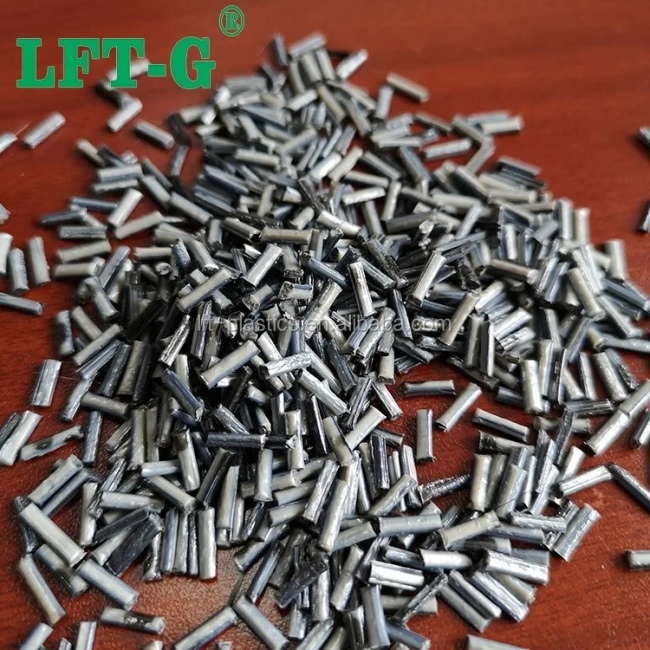
Properties of PEEK Resin
PEEK plastic raw materials are aromatic, crystalline thermoplastic polymers with a melting point of 334 °C. They exhibit high mechanical strength, high-temperature resistance, impact resistance, flame retardancy, acid and alkali resistance, hydrolysis resistance, wear resistance, fatigue resistance, radiation resistance, and excellent electrical properties.
High-Temperature Resistance
PEEK resin features a high melting point (334 °C) and a glass transition temperature of 143 °C, with a continuous use temperature of 260 °C. Grades reinforced with 30% glass fiber or carbon fiber have a heat deflection temperature as high as 316 °C.
Mechanical Properties
PEEK resin offers excellent toughness and rigidity. Its fatigue resistance under alternating stress is comparable to that of metal alloys.
Flame Retardancy
Flammability is measured according to UL94 standards, which involves igniting a vertically mounted sample and recording the time taken for it to self-extinguish. PEEK achieves UL94 V-0, the highest flame-retardant rating.
Dimensional Stability
PEEK exhibits outstanding dimensional stability under changing environmental conditions such as temperature and humidity, making it suitable for applications requiring high precision.
PEEK has low injection molding shrinkage, enabling tighter dimensional tolerances than general plastics.
Its low thermal expansion coefficient ensures minimal dimensional changes due to temperature fluctuations.
PEEK maintains stable dimensions under usage and storage, as polymer chain movement is minimal.
Its hydrolysis resistance prevents dimensional changes caused by moisture absorption, unlike common plastics like nylon.
Electrical Insulation
PEEK exhibits excellent electrical insulation properties over a wide temperature range, with low dielectric loss even at high frequencies.
Radiation and Peel Resistance
PEEK resin has good radiation and peel resistance, making it suitable for specialized electrical wires. It can be used in sterilizers and wireless verification systems, providing performance comparable to stainless steel.
Exceptional Performance
- Outstanding high-temperature performance: continuous use up to 250–260 °C, short-term exposure up to 300 °C.
- Very high stiffness, tensile and compressive strength, and impact resistance.
- Excellent flame retardancy: inherent flame retardancy, low smoke and low toxicity.
- Resistant to almost all organic and inorganic chemicals (except highly corrosive agents like fuming sulfuric acid, nitric acid, or dichloromethane).
- High dielectric strength and excellent insulation properties.
- Superior wear resistance and low friction coefficient.
Applications
As a high-performance semi-crystalline aromatic engineering plastic, PEEK can replace metals and ceramics in many demanding applications. Its high temperature resistance, chemical stability, mechanical properties, dimensional stability, low thermal expansion, wear resistance, and self-lubricating properties make it ideal for aerospace, mechanical, petroleum, chemical, nuclear power, and railway industries. Even under 200 °C steam, its tensile strength, mass, and appearance remain stable. It has excellent fatigue resistance under high alternating stress, long-term load-bearing capability, flame retardancy, self-extinguishing property, and environmentally friendly combustion (halogen-free, UL94 V-0, oxygen index 24–35).
PEEK is only soluble in concentrated sulfuric acid and nitric acid; otherwise, it is chemically stable, though insufficiently crystallized PEEK may develop cracks in certain solvents like chlorinated hydrocarbons.
Processing
PEEK can be processed via injection molding, extrusion, blow molding, or compression molding. For small-batch or prototype PEEK components, machining from rods or sheets is preferred. Machining should use carbide or diamond tools due to PEEK's wear resistance. Pre-annealing the material can relieve residual stresses, and post-machining stress-relief treatment is recommended to prevent local stress buildup during processing.
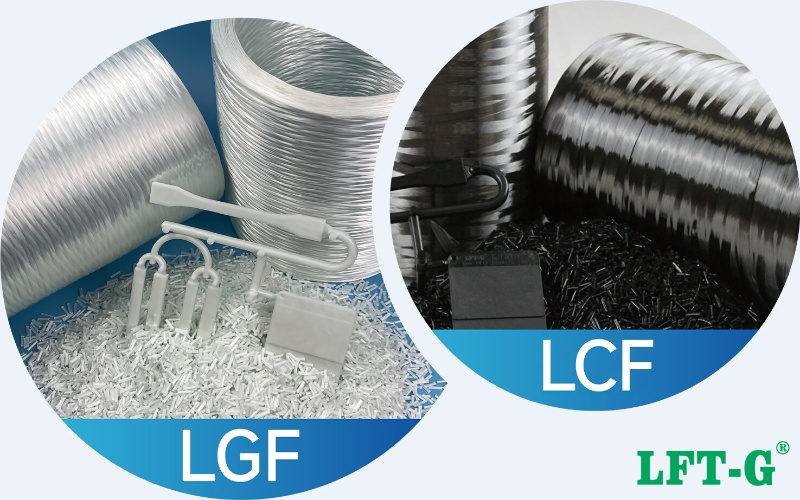
Current Uses
PEEK is widely used in electrical insulation (wires, flexible PCBs), mechanical components, chemical equipment, nuclear engineering, oilfield connectors, valves, heat-resistant or corrosion-resistant coatings, and in sterilizers and wireless verification systems, sometimes serving as a stainless steel alternative. Its exceptional combination of properties continues to make it a high-demand material across multiple advanced industries, including aerospace, automotive, electronics, medical, and food processing.
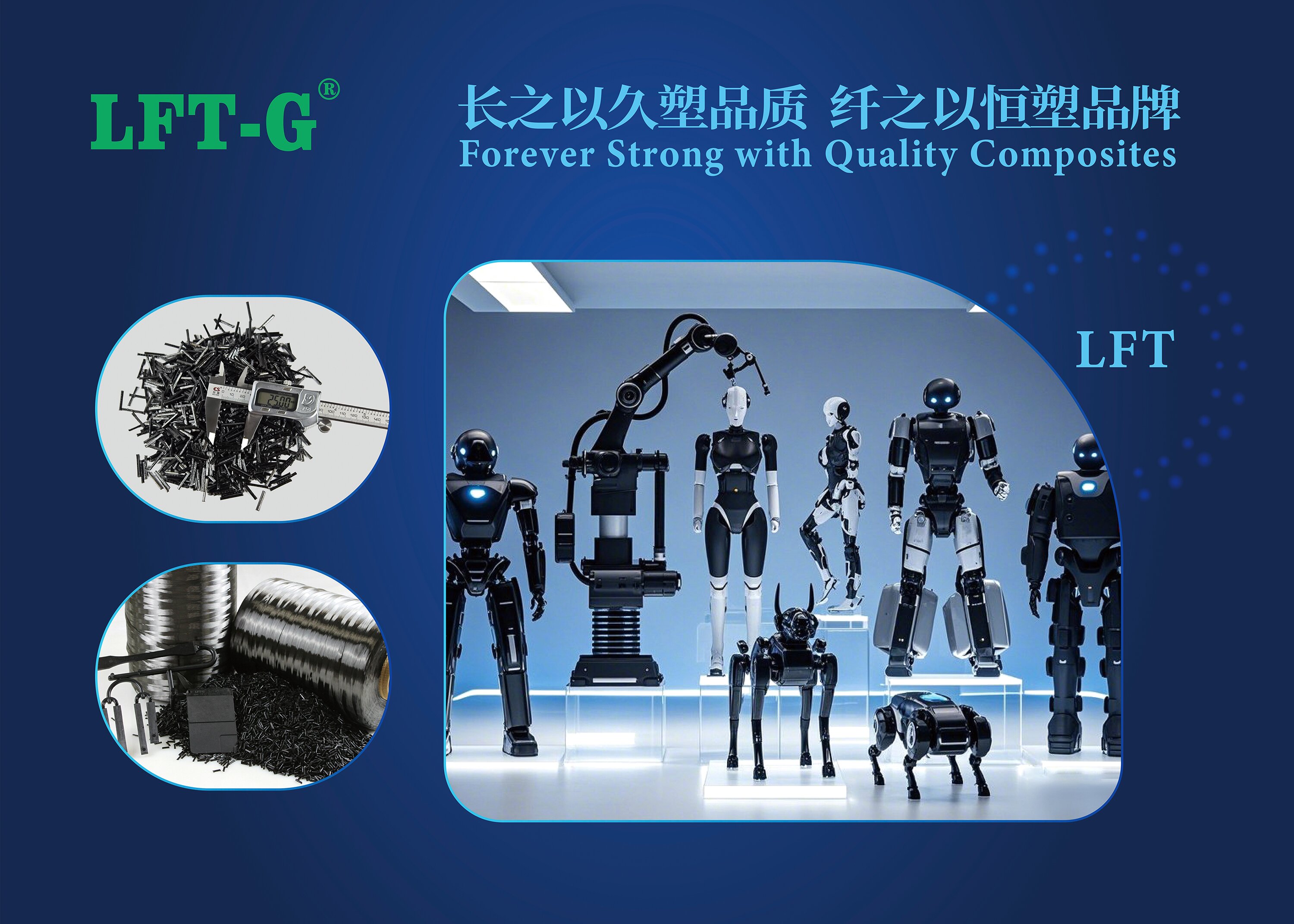
How does a pile of loose ceramic powder transform into a final product with complex shapes and precise structures? All of this is thanks to a key manufacturing step: forming.
Today, we will clearly explain three main ceramic forming methods, exploring their working principles, advantages, disadvantages, and typical applications.
1.Dry Pressing
This is the simplest and most common method, very suitable for the mass production of simple-shaped parts.
Working Principle: Ceramic powder mixed with a small amount of binder is filled into a metal mold. Then, high pressure is applied via upper and lower punches to compact the powder into a dense "green body".
Advantages:
High Efficiency: High degree of automation and fast production speed.
Uniform Dimensions: Excellent product consistency.
Low Cost: Suitable for large-scale production.
Disadvantages:
Difficulty in manufacturing complex shapes (e.g., parts with side holes, thin walls).
High mold cost.
Possible uneven density in the green body.
Typical Applications: Ceramic seal rings, gaskets, substrates, bricks, tiles, etc.
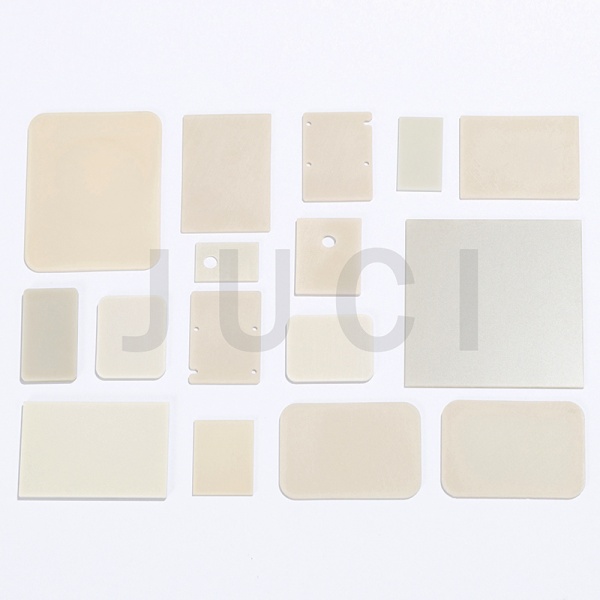
2. Isostatic Pressing
Isostatic pressing was developed to solve the density uniformity issues of dry pressing. It uses a liquid or gas as the pressure-transmitting medium to compress the powder uniformly from all directions.
Working Principle: Ceramic powder is loaded into a flexible rubber or plastic mold, which is sealed and placed into a high-pressure vessel. Pressure is applied via a high-pressure pump, uniformly compacting the powder.
Advantages:
Uniform Density: The properties of the green body are consistent in all directions, which is key for manufacturing high-performance ceramics.
Good Shape Capability: Can produce parts with relatively complex shapes.
Disadvantages:
Large equipment investment.
Production cycle is longer than dry pressing.
Relatively low dimensional accuracy, often requiring subsequent machining.
Typical Applications: Large crucibles, high-voltage electrical insulators, spark plugs, high-performance structural components.
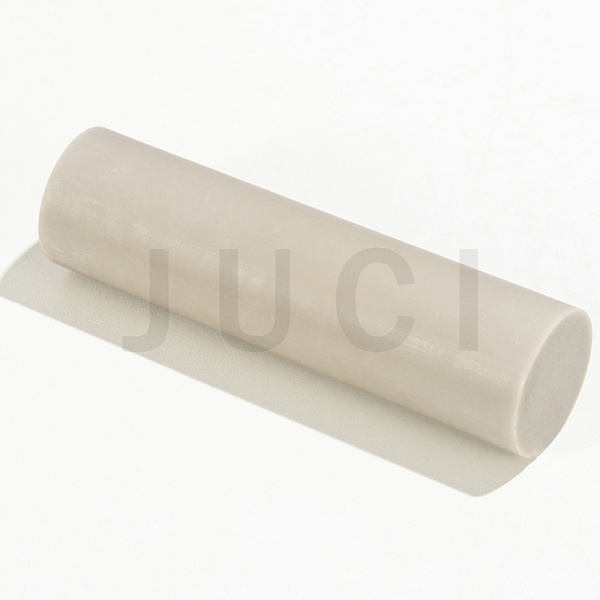
3. Injection Molding
If you need to manufacture ceramic parts with highly complex 3D geometries, similar to metal or plastic parts, injection molding makes this possible.
Working Principle: A large amount of ceramic powder is mixed with a thermoplastic binder and plasticized upon heating. It is then injected into a sealed mold cavity using a screw. After cooling and solidifying, it is demolded to obtain the "green body". Subsequent debinding processes are required to remove the binder before sintering.
Advantages:
Extremely high shape complexity and dimensional accuracy.
Automated production, high efficiency.
Good product consistency.
Disadvantages:
The debinding process is very slow and prone to causing defects.
High cost of molds and equipment.
High raw material cost.
Typical Applications: Micro ceramic gears, engine turbine rotors, medical surgical tools, electronic packaging components, etc.
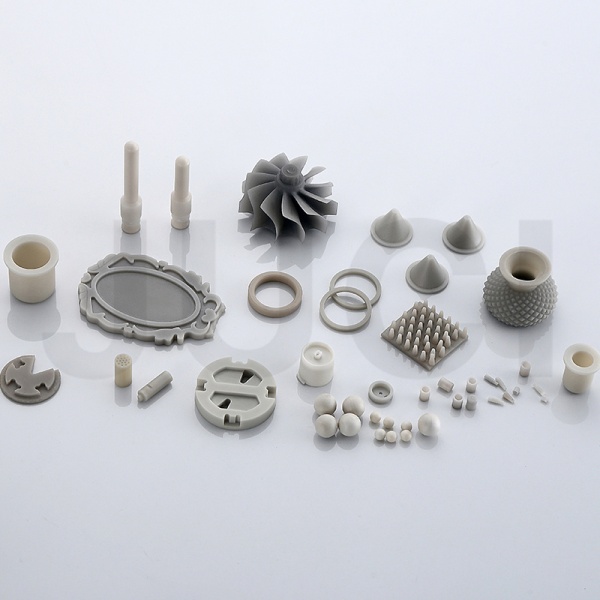
About Xiamen Juci Technology Co., Ltd.
Xiamen Juci Technology Co., Ltd. is a high-tech enterprise specializing in the research, development, and production of high-performance Aluminum Nitride (AlN) ceramics. Mastering advanced ceramic forming and sintering technologies is crucial for manufacturing its premium AlN products. Aluminum Nitride ceramic is renowned for its high thermal conductivity, excellent electrical insulation, and low thermal expansion.
By leveraging sophisticated processes, including those mentioned above, Juci provides high-quality AlN substrates, structural parts, and heat sinks. These products are vital solutions for thermal management challenges in cutting-edge industries such as 5G communication, new energy vehicles, and high-power LED packaging.
Contact:
Xiamen Juci Technology Co., Ltd.
Phone: +86 592 7080230
Email: miki_huang@chinajuci.com
Website: www.jucialnglobal.com
In the grand landscape of modern electronics, ceramic substrates, though often operating behind the scenes, play an indispensable and critical role. From high-frequency signal transmission in 5G base stations, to motor controllers in new energy vehicles, and further to the core packaging layers of power semiconductors, ceramic substrates are consistently stationed at the heart of electronic components. They silently shoulder the dual mission of acting as the "Thermal Backbone" and "Insulation Guardian."
Taking 5G base stations as an example, their operation generates significant heat. If this heat is not dissipated promptly, device performance can drastically degrade, potentially leading to failures. Leveraging their exceptional thermal conductivity, ceramic substrates can rapidly transfer heat away, ensuring stable base station operation. Within the motor controllers of new energy vehicles, ceramic substrates must not only endure high-temperature environments but also withstand the challenges of high voltage and high current. Their superior insulation properties and mechanical strength provide reliable assurance for the efficient operation of the motors.
According to forecasts from authoritative institutions, the global ceramic substrate market is projected to soar from USD 1.13 billion in 2022 to USD 4.15 billion in 2029, achieving a remarkable compound annual growth rate (CAGR) of 18.23%. Behind this rapid growth lies the explosive demand from sectors such as power electronics, third-generation semiconductors, and high-end equipment. With the rapid advancement of technology, the performance requirements for electronic components in these fields are increasingly stringent, and the importance of ceramic substrates as a key material is becoming ever more prominent.
About Xiamen Juci Technology Co., LTD
Juci provides high-quality AlN ceramic substrates, structural parts, and heat sinks. These products are vital solutions for thermal management challenges in cutting-edge industries such as 5G communication, new energy vehicles, and high-power LED packaging.
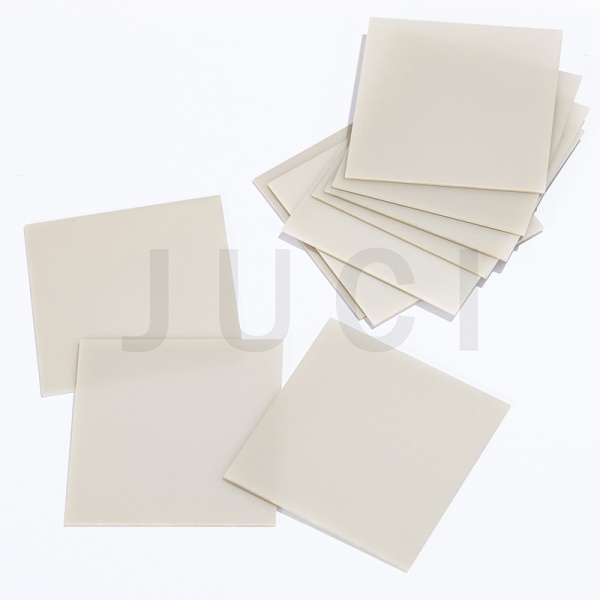
Contact:
Xiamen Juci Technology Co., Ltd.
Phone: +86 592 7080230
Email: miki_huang@chinajuci.com
Website: www.jucialnglobal.com
Today, with the continuous increase in the power density of electronic devices, heat dissipation has become one of the key bottlenecks restricting technological development. Traditional thermal interface materials are gradually unable to meet the demands of efficient heat dissipation. Nitride ceramic fillers, especially aluminum nitride (AlN), hexagonal boron nitride (h-BN), and silicon nitride (β-Si₃N₄), are emerging as new research and application focuses due to their outstanding thermal conductivity and comprehensive physical properties.
Aluminum nitride (AlN) is regarded as an ideal material for the next generation of heat dissipation substrates and electronic device packaging due to its excellent thermal conductivity (theoretical thermal conductivity of 320 W·m⁻¹·K⁻¹), reliable electrical insulation, low dielectric constant and dielectric loss, as well as a coefficient of thermal expansion (CTE, 4.5 × 10⁻⁶ °C⁻¹) that matches that of silicon.
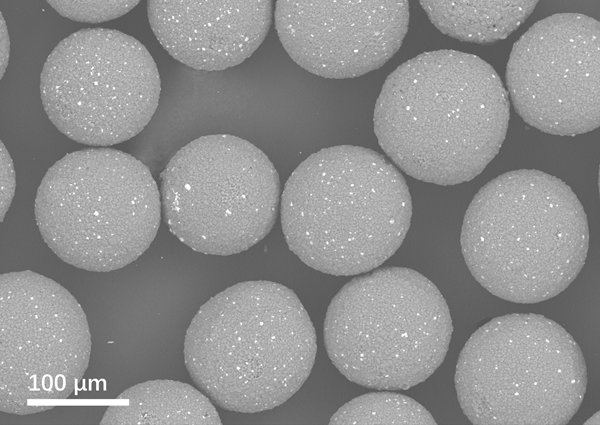
Hexagonal boron nitride (h-BN), with its wide bandgap (5.2 eV), high thermal conductivity (theoretical thermal conductivity of 2000 W·m⁻¹·K⁻¹), and low density (2.3 g·cm⁻³), has a hexagonal ring network structure similar to graphene and is often referred to as "white graphene." Coupled with its excellent lubricity and chemical stability, it has gradually become a major focus in the field of thermal interface materials.
Polymer composites using BN as a nano-filler can simultaneously achieve high thermal conductivity, low CTE, and high electrical resistance, meeting the urgent demands of new high-efficiency thermal management materials. Additionally, β-Si₃N₄ as a filler facilitates the formation of a particle network, enhancing thermal conductivity while maintaining good mechanical and thermodynamic stability.
Nitride ceramic fillers exhibit exceptional intrinsic thermal conductivity, making them a key research direction in the laboratory development of ultra-high thermal conductivity thermal interface materials. However, the preparation of nitrides is relatively challenging and costly, particularly for nitride fillers with high application value and specific shapes, such as spherical AlN, BN nanosheets/nanotubes, and β-Si₃N₄ whiskers. Achieving low-cost, efficient, and industrial-scale mass production remains one of the important research topics.
About Xiamen Juci Technology Co., LTD
Xiamen Juci Technology Co., Ltd. is a leading Chinese manufacturer specializing in aluminum nitride ceramic fillers. Our filler product line includes two series: aluminum nitride single crystal filler and aluminum nitride ceramic microspheres. Known for their high purity, narrow particle size distribution, and excellent thermal conductivity, these materials have established us as a trusted thermal management solutions provider for clients worldwide.
Contact:
Xiamen Juci Technology Co., Ltd.
Phone: +86 592 7080230
Email: miki_huang@chinajuci.com
Website: www.jucialnglobal.com
Customer Project:
PA6-LGF40 Solution for Aluminum Cutting Machine
In this project, PA6 filled with 40% long glass fiber (PA6-LGF40) was chosen to replace the short glass fiber reinforced material for the end support block of an aluminum profile cutting machine positioning stop. The black component serves as a structural support part, requiring excellent mechanical strength, dimensional stability, and long-term durability under repeated impact and vibration.
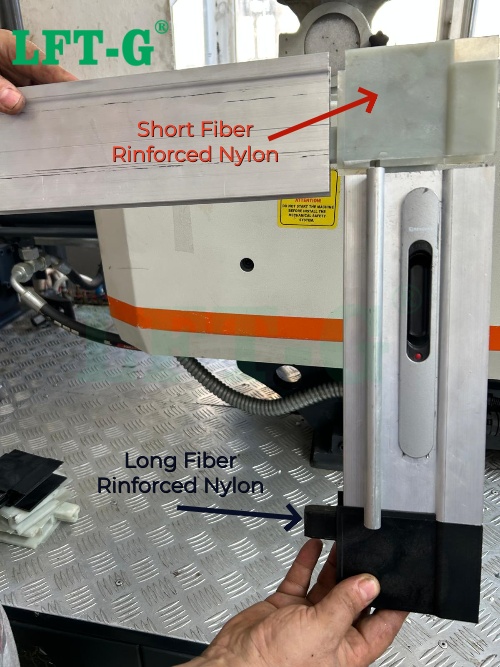
Project Background
The positioning stop of an aluminum profile cutting machine plays a crucial role in ensuring cutting accuracy and stability. Traditionally, the end support block of the stop was made from short glass fiber reinforced nylon, which often suffered from deformation, wear, and reduced precision after long-term use due to continuous vibration and impact during operation.
To improve durability and maintain dimensional stability, the client sought a material solution that combined high strength, stiffness, and long-term reliability without increasing weight or compromising processability.
Material Advantages
PA6-LGF40 demonstrated the following key advantages:
- High Strength & Stiffness: The long glass fibers form a continuous reinforcing network, significantly enhancing mechanical performance and load-bearing capacity, ensuring structural stability under repeated mechanical stress.
- Impact & Fatigue Resistance: The material maintains its mechanical integrity even under repeated cutting vibrations, preventing cracking or deformation over time.
- Dimensional Stability: The component retains accurate geometry during long-term use, ensuring consistent positioning accuracy and reducing the need for maintenance or recalibration.
- Lightweight & Processability: Compared with metal or overly dense composites, PA6-LGF40 achieves a balance between strength and weight, while still being easy to mold and assemble.
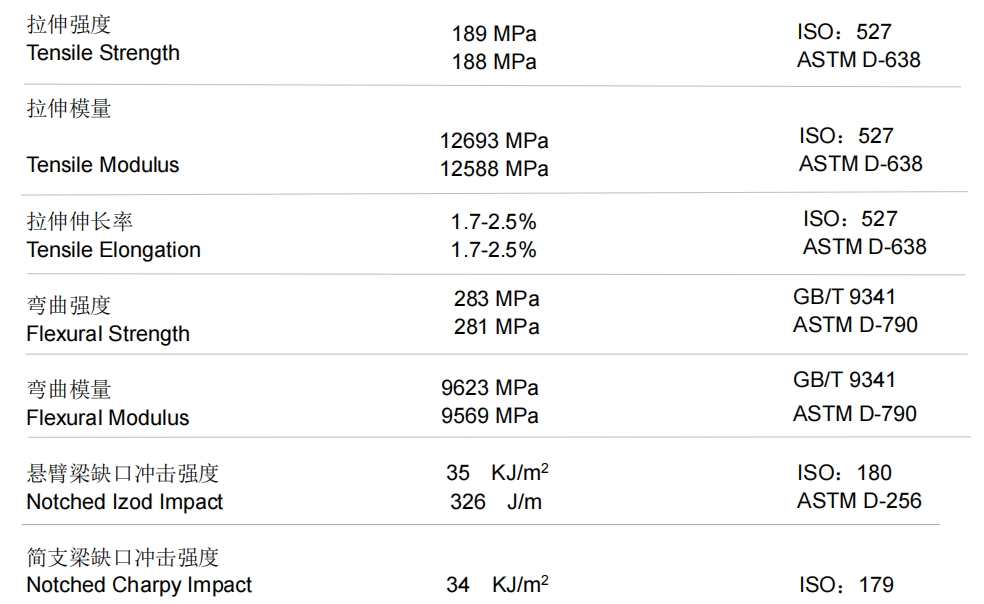
Datasheet for LFT PA6-LGF40
Customer Benefits
By switching to PA6-LGF40, the customer obtained a high-performance structural component that provides superior mechanical strength, impact resistance, and dimensional stability compared to the previous short glass fiber material.
The improved toughness and long-term durability of the positioning stop ensure stable cutting accuracy, reduced deformation, and longer service life of the equipment.
Additionally, the enhanced wear resistance and reliability significantly lower maintenance frequency and overall operating costs, while maintaining lightweight performance.
Conclusion
This project demonstrates the successful replacement of a short glass fiber reinforced nylon component with PA6-LGF40 long glass fiber composite in an aluminum profile cutting machine positioning stop.
The upgrade not only improved mechanical performance and durability but also exemplifies the practical application of “plastic replacing metal” and “long fiber replacing short fiber” concepts in industrial equipment components, delivering both technical and economic advantages.
About Us
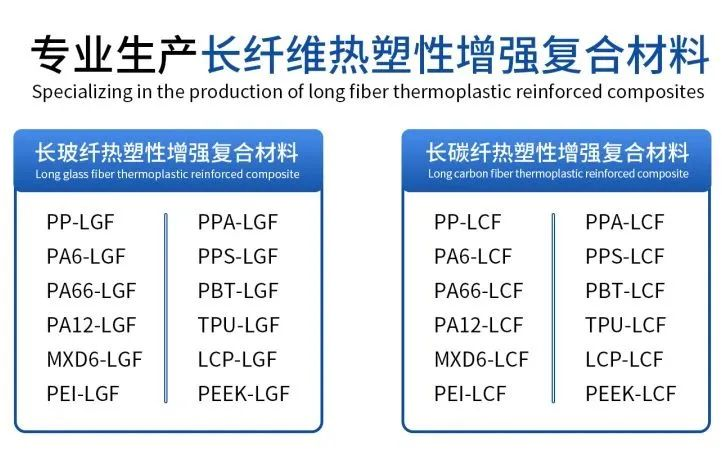
Xiamen LFT Composite Plastic Co., Ltd. (LFT-G) is a global leading manufacturer of long fiber reinforced thermoplastic (LFT) materials. With our R&D, we specialize in research, development, and production of high-performance composite solutions, including PA, PP, TPU, PEEK, PPS, and PPA filled with long glass fiber or long carbon fiber.
Our materials are widely applied in automotive, electronics, power tools, and industrial components, offering exceptional strength, impact resistance, dimensional stability, and "plastic replacement for steel" capabilities.
Committed to innovation and sustainability, LFT-G integrates advanced technology with customer-focused service, delivering tailored solutions that meet the most demanding requirements while reducing weight, enhancing durability, and ensuring cost efficiency.
Poor Transparency:
Due to poor contact between the molten material and the mold surface, tiny pits appear on the surface of the molded part, causing light scattering. Alternatively, the mold surface may not be sufficiently polished, resulting in decreased or uneven transparency in transparent products.
| 22.1 Causes | 22.2 Solutions |
|---|---|
| 22.1.1 Low mold temperature or low material temperature, causing poor contact between molten material and mold surface. | 22.2.1 Increase mold and material temperatures to ensure full contact between the melt and mold surface. |
| 22.1.2 Dull mold surface, oil, or moisture contamination. | 22.2.2 Clean the mold surface to remove oil and moisture, or polish the mold surface. |
| 22.1.3 Excessive or inappropriate mold release agent. | 22.2.3 Use a suitable release agent or reduce the amount sprayed. |
| 22.1.4 High material temperature or excessive shear in the gating system causing material decomposition. | 22.2.4 Lower material temperature and injection speed to prevent material degradation. |
| 22.1.5 High moisture content, impurities, black streaks, or silver streaks in the plastic. | 22.2.5 Dry the material according to requirements and replace any nonconforming material. |
| 22.1.6 Poor plasticizing. | 22.2.6 Adjust processing conditions to ensure uniform plasticization. |
| 22.1.7 Poor or uneven cooling of crystalline materials, or uneven wall thickness of molded parts. | 22.2.7 Ensure uniform cooling for crystalline materials or modify the product design to make wall thickness as even as possible. |
| 22.1.8 Hot runner temperature too high or too low. | 22.2.8 Adjust the hot runner temperature. |
- Bismaleimide Series2
- Cross-Linking agent / Vulcanizing Agent1
- Curing Agent1
- Engineering Plastic Pellets4
- Epoxy Resin2
- Ethylene-VinylAlcohol Copolymer(EVOH)1
- Fish Oil1
- Food Additives3
- Glucosamine1
- Heat-resistant modifier series1
- High Assay Quaternary Ammonium Compounds9
- Low Assay Quaternary Ammonium Compounds13
- Modified Polyvinyl Alcohol1
- Monomalemide Series2
- Other Surfactants/Catalysts8
- Plastic Random Packing1
- Plastic Structured Packing1
- Polyacrylamide1
- Polyurethane Resin2
- Polyvinyl Alcohol (PVA)2
- Power Coatings3
- Quaternary Ammonium Hydroxide4
- Special Quaternary Ammonium Compounds7
- TPU4
- Tertiary Amines1
- UV Ink1
- VAE Emulsion (Vinyl Acetate–ethylene Copolymer Emulsion)1
- aluminum paste1
- antiform2
- fire sleeve2
- resin2